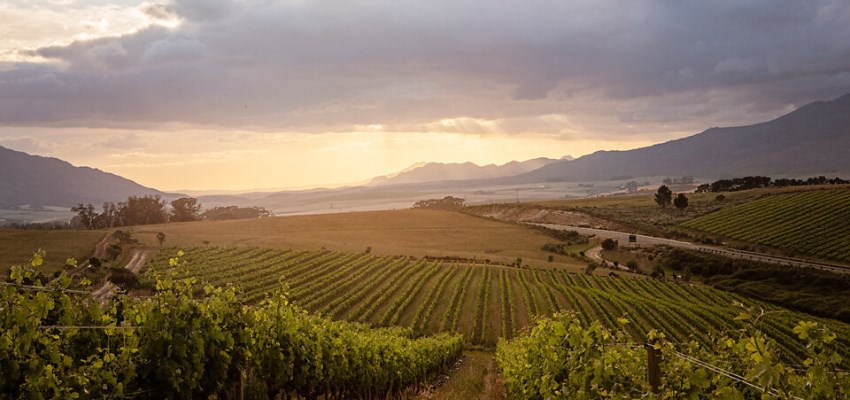
Hermanus has, in the past few years, moved on from being primarily a retirement or holiday town. Due to the global pandemic and the increase in remote work, it became one of the most sought-after places to move to for those no longer tied to commuting to the office on a daily basis.
And why wouldn’t anyone want to move there? The lifestyle is fantastic! It has whales, mountain walks, golf courses, beautiful beaches, a fabulous weekend market – and a plethora of fantastic wine producers right on its doorstep in the Hemel en Aarde valley.
So many, in fact, that it’s no longer “just” the valley. Now it’s been split into Hemel en Aarde Valley, Upper Hemel en Aarde, and Hemel en Aarde Ridge wards.
Within the space of 15 kilometres along the R320 day trippers can find Whalehaven, Hermanuspietersfontein, Bartho Eksteen (and the Wijnskool), Southern Right, Hamilton Russell, Bouchard Finlayson, La Vierge, Bosman, Newton Johnson, Hasher Estate (formerly Sumaridge), Moya’s Vineyards, Restless River, Ataraxia, Hemelrand where Chris and Suzanne Alheit created the Cartology phenomenon, Wild Air, Storm, Spookfontein, Creation (along with winemaker Gerhard smith’s own label Die Kat se Snor), Mount Babylon, Jakob’s vineyard, Domaine des Dieux, and Seven Springs.
And to think it started less than four decades ago, with Tim Hamilton Russell, founder of Hamilton Russel Vineyards (HRV). In the 1994 edition of the Platter's Guide – then still penned and edited by the formidable husband and wife duo of John and Erica Platter – he shared top billing with Sydney Back as their Wine Men of the Year for 1993.
After 10 years of searching for the best possible terroir to launch an assault on Burgundy (white and red), Hamilton Russell realised that his own back yard had precisely what he was looking for. “The hills behind [Hermanus], brushed by sea-breezes, where the HRV pinot and chardonnay vineyards now flourish, had long been written off as a viticultural area, better suited to livestock and fynbos,” the Platters wrote.
“This merely reflected the distortions of a protected, controlled industry, with the accent on easy, bulk wine production; the hotter and more fertile the area, the more prolific the grape varieties, the better.
“Tim Hamilton Russell’s arrival on the viticultural periphery, without even a KWV quota, soon challenged many of the central themes of official policy.”
They wrote about the subterfuges the former advertising man had to resort to in order to evade the authorities. “Varieties, vintages and origins could not be stated. In 1986 and 1987 we were drinking something with P4 in large half-tones on a label; this was the 1984 Pinot Noir to those who troubled to find out.
“Peter Finlayson, HRV’s winemaker at the time, remembers the harrying of KWV inspectors. Fortunately, HRV crop-thinning practices, cutting away a portion of the grape bunches to concentrate flavour, were sometimes offered as convincing evidence that the vineyards were merely experimental and ornamental.”
Platter’s also praised Tim Hamilton Russell’s “vociferous campaign against quotas” which were finally abolished in 1992.
They went on to state in their acclamation: “Since then, and by fairly general acclaim from both South African and international critics, the HRV pinot noir is recognised as the Cape’s leading example (though hot new competition will test this increasingly) and the HRV chardonnay is acknowledged as among consistently the top half dozen, and probably the one which holds best longest.”
Fairly prescient words from the Platter's – especially regarding the challenges of “hot new competition” – much of that in the shape of previous winemakers! Finlayson went on to Bouchard Finlayson, Storm Kreusch-Dau moved to Whalehaven, Kevin Grant who began Ataraxia and finally Hannes Storm of Storm Wines! The fact that all remained in this piece of heaven and earth speaks volumes.
But the valley is no longer a two-trick pony with its fortunes tied to just pinot noir and chardonnay. Sauvignon blanc has been shown to perform well driven by the energy of Bartho Eksteen, the dynamic duo of Carolyn and JC Martin planted grenache and merlot on former sheep paddocks at Creation while Restless River’s Craig Wessels makes extraordinary cabernet sauvignon.
It’s been less than 30 years since the Platters wrote those words. What might the next 30 hold?
This article was originally published on WOSA's blog, Cape Chatter.